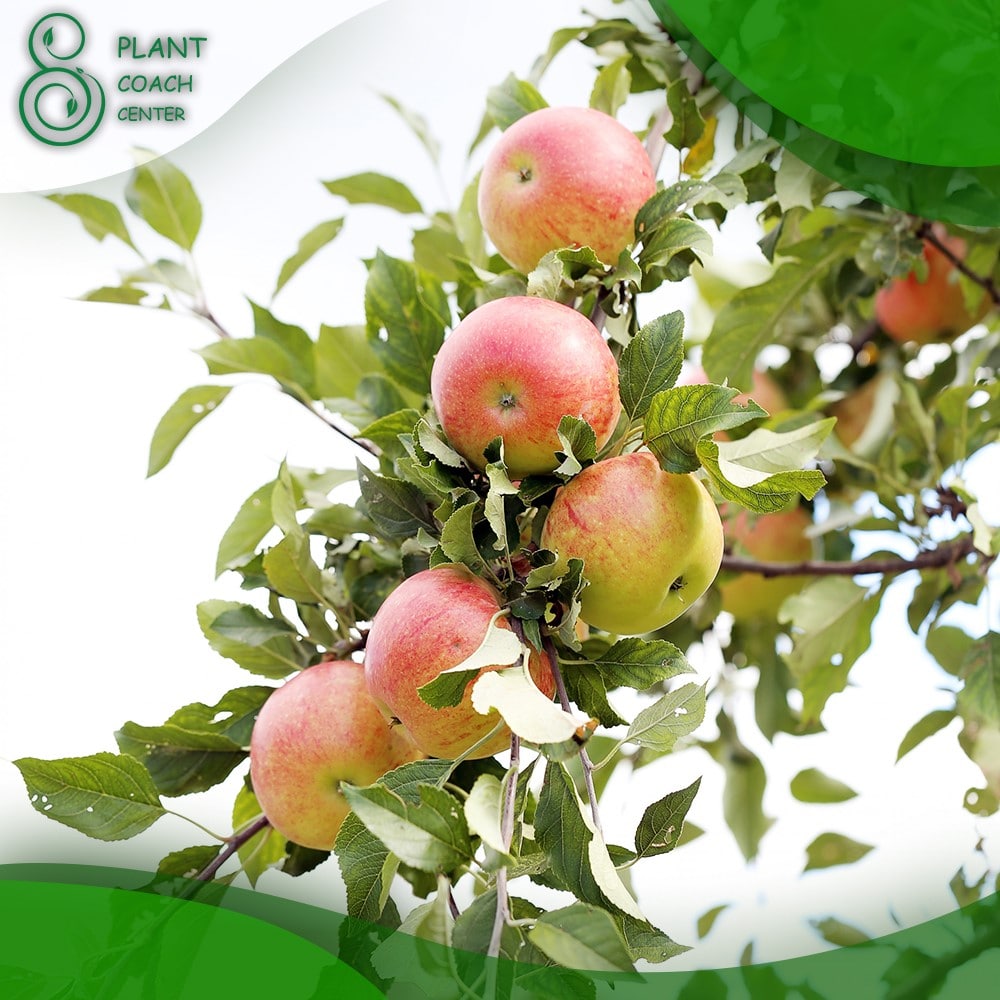Introduction to When to Prune Espalier Apple Trees
Espalier apple trees, unlike their conventionally grown counterparts, offer a unique approach to cultivating these fruit-bearing beauties. Picture apple trees that hug walls or fences, their branches elegantly trained to form geometric patterns. Yet, the secret to unlocking their full potential lies not just in their distinctive form, but also in the precise timing of pruning.
Timing, you see, is the heartbeat of espalier apple tree care, governing the difference between a thriving orchard and a lackluster harvest. In this article of plantcoachcenter.com , we’ll delve into the world of espalier apple trees, unraveling their pruning intricacies, and why timing plays a pivotal role. Whether you’re an orchard enthusiast or a novice gardener, understanding when to prune these trees can make all the difference in nurturing healthy growth and reaping the rewards of a bountiful apple harvest.
So, let’s embark on this journey to uncover the art of pruning espalier apple trees, one season at a time.
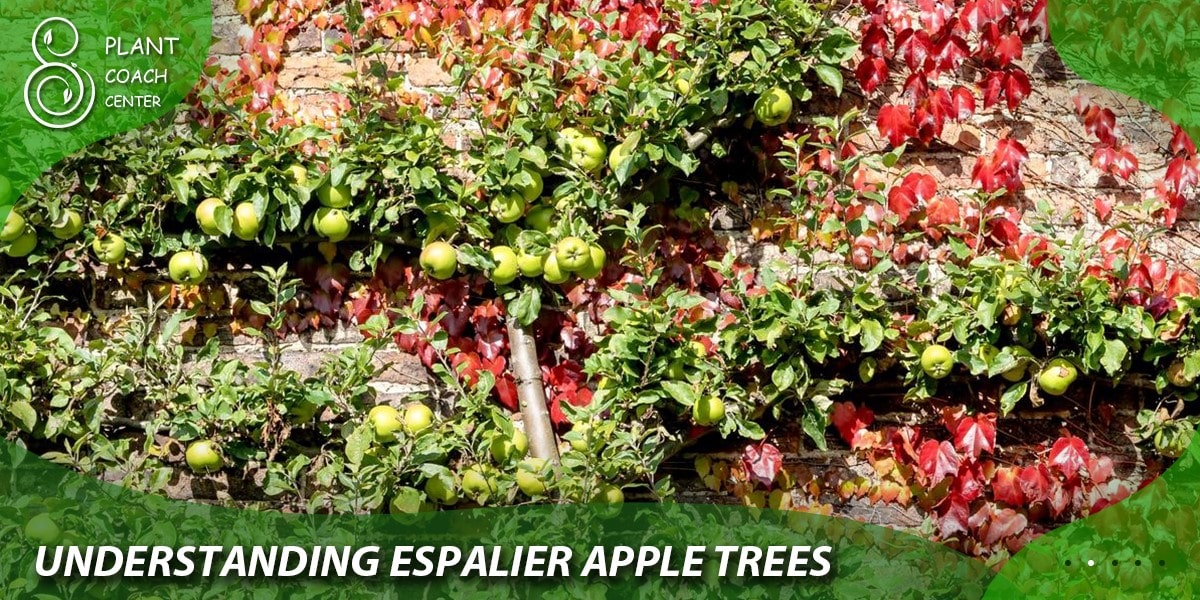
Understanding Espalier Apple Trees
Espalier apple trees are a distinct and artistic approach to growing apple trees, quite different from the conventional free-standing trees you might envision in an orchard. Rather than allowing apple trees to grow freely in three dimensions, espaliering involves training these trees to grow flat against a support structure, such as a wall or a fence. This meticulous training results in a two-dimensional, often geometric pattern of branches.
What sets espalier apple trees apart from their traditional counterparts is their unique growth pattern. Instead of a tall central trunk, espaliered apple trees boast horizontally trained branches that extend in various directions. These branches are carefully pruned and spaced to form an organized and space-saving design.
The benefits of espaliering apple trees are numerous. First and foremost, it optimizes space utilization, making it an excellent choice for small gardens or confined areas. By growing flat against a structure, espalier apple trees also maximize sunlight exposure for their branches and fruit. This enhanced sunlight exposure aids in photosynthesis and fruit ripening, resulting in healthier trees and more abundant harvests. In essence, espalier apple trees combine horticultural finesse with an aesthetic appeal that not only saves space but also elevates your garden’s visual charm.
The Significance of Timing
The timing of pruning plays an absolutely critical role in the successful cultivation of espalier apple trees. Think of it as the conductor’s baton in an orchestra, guiding the growth and development of these trees with precision. Timing isn’t just a minor detail; it’s the difference between a flourishing apple orchard and one that struggles to produce fruit.
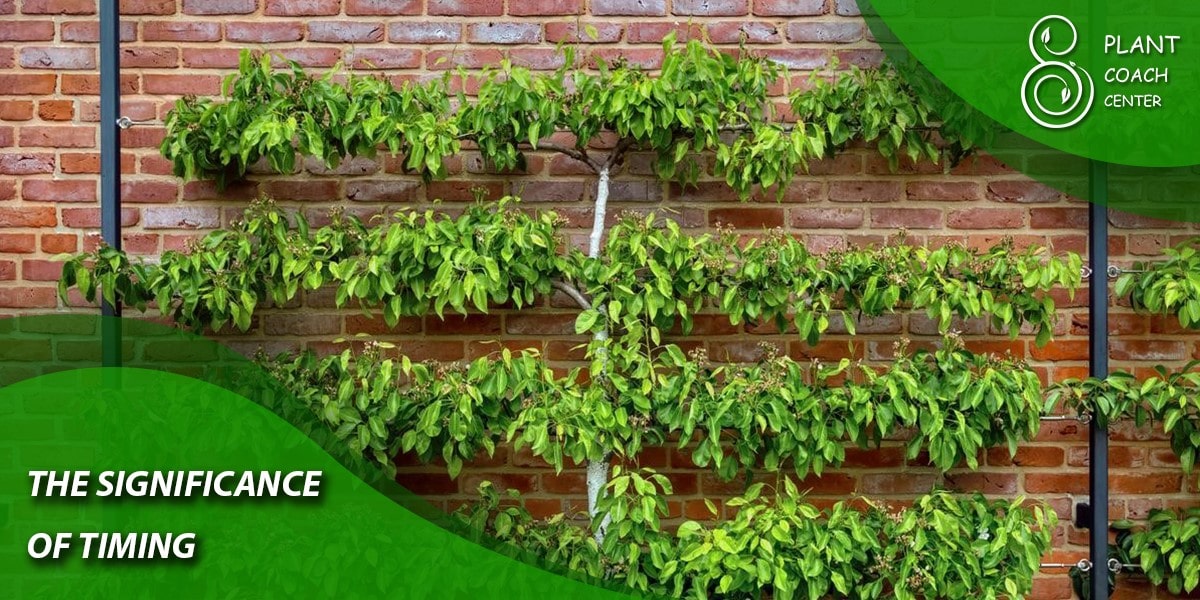
Improper timing can lead to a host of issues, starting with reduced fruit production. When pruning is mistimed, it disrupts the tree’s natural growth cycle. Pruning too early in winter can expose tender new growth to frost, potentially damaging the tree. On the other hand, pruning too late can interfere with the blossoming and fruit-setting process in spring, ultimately impacting the yield.
Beyond fruit production, tree health is also at stake. Pruning at the wrong time can weaken the tree’s overall structure, making it susceptible to diseases and pests. It’s akin to trying to fix a puzzle piece into the wrong slot – it just doesn’t fit, and the entire picture becomes distorted.
In summary, timing is the linchpin in espalier apple tree pruning. Get it right, and you’ll nurture healthy, fruit-bearing trees. Get it wrong, and you’ll be left with diminished harvests and a tree that’s vulnerable to health issues. So, let’s master the art of timing to unlock the full potential of your espalier apple trees.
Winter Pruning: Shaping the Future Harvest
Winter pruning stands as a cornerstone practice in the care and maintenance of espalier apple trees. Executed during the tree’s dormant period, it offers several distinct advantages that set the stage for a fruitful season ahead.
First and foremost, winter pruning allows for the meticulous shaping of the tree’s structure. With the tree’s leaves shed and its energy focused inward, it’s the perfect time to assess and mold the framework. This process isn’t just about aesthetics; it directly impacts the tree’s ability to bear fruit efficiently. By carefully selecting which branches to retain and which to remove, you’re essentially sculpting the tree’s architecture, ensuring an open and organized framework that sunlight can readily penetrate come spring.
Additionally, winter pruning serves as a prompt for the tree to initiate new growth. When you trim branches during this dormant phase, it prompts the tree to allocate resources to the remaining buds. This allocation not only encourages stronger, healthier growth but also leads to a more robust flowering and fruiting season when spring arrives.
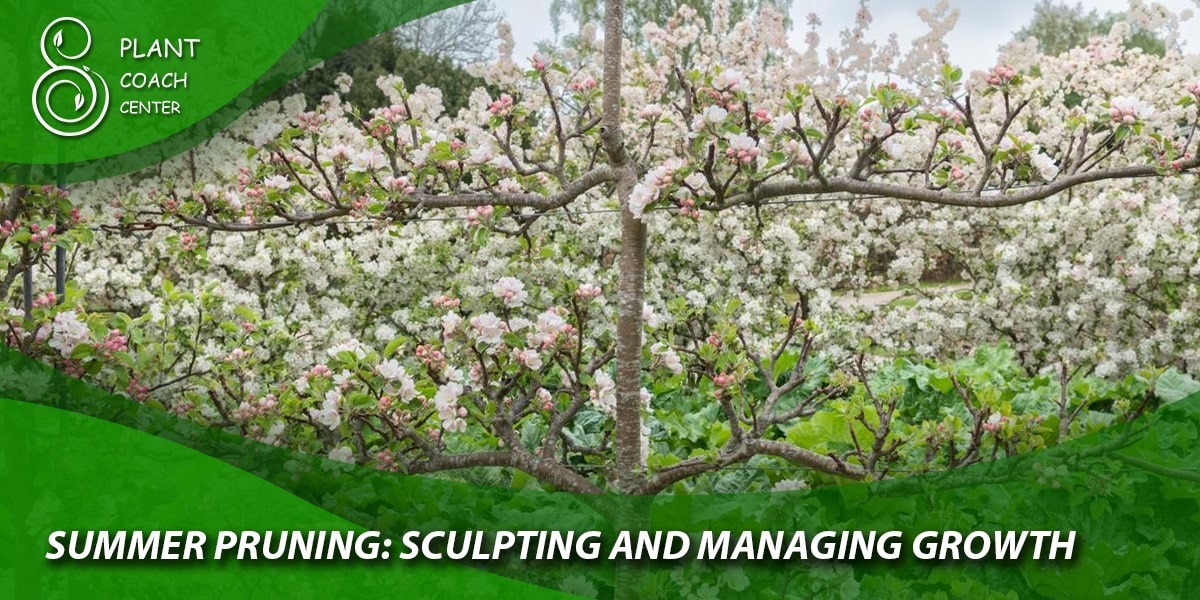
The ideal window for winter pruning typically spans from late December to early February, varying slightly depending on your local climate and specific tree variety. It’s crucial to undertake this task before the tree breaks dormancy and begins to bud, as pruning during this active growth period can disrupt the blossoming and fruit-setting process.
In essence, winter pruning is your opportunity to craft the foundation upon which your espalier apple tree’s future harvests will thrive. It’s a practice that melds artistry with horticulture, and by mastering its intricacies during the dormant season, you set the wheels in motion for a year of abundant apple picking come harvest time.
Summer Pruning: Sculpting and Managing Growth
Summer pruning steps into the limelight as a vital tool in the arsenal of espalier apple tree care. Unlike its winter counterpart, this practice occurs when the tree is in full leaf and active growth mode. Its primary mission is twofold: to preserve the tree’s shape and size while taming unruly growth and eliminating unwanted branches.
One of the chief advantages of summer pruning lies in its ability to maintain the desired shape and size of your espalier apple tree. As the season progresses, it’s not uncommon for branches to sprout with exuberance, threatening to undermine the carefully structured design. Summer pruning allows you to nip this exuberance in the bud, quite literally. By selectively trimming back overzealous branches, you preserve the tree’s form, ensuring it remains a testament to both aesthetics and functionality.
Moreover, summer pruning is the go-to strategy for controlling excessive growth. It’s during these sun-soaked months that the tree’s energy is channeled towards active foliage and fruit production. While this is desirable to a degree, unchecked growth can lead to overcrowding, poor air circulation, and reduced sunlight penetration. By judiciously removing surplus branches, you promote better fruit ripening, mitigate the risk of diseases, and enhance the overall health of your tree.
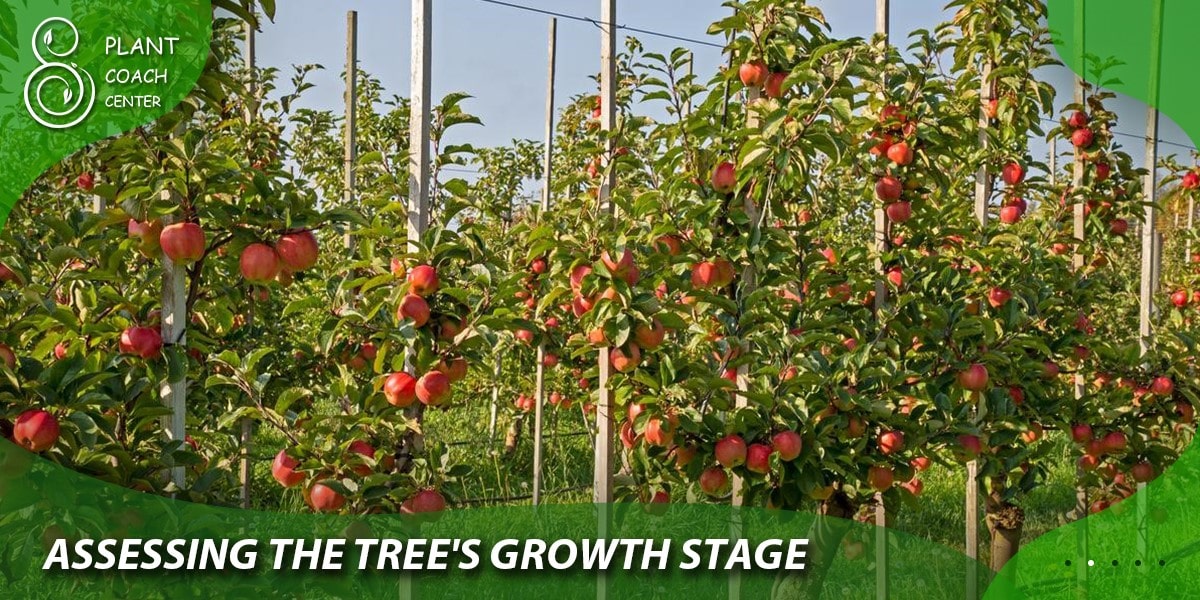
The optimal timeframe for summer pruning typically spans from June to August. This period coincides with the tree’s peak growth phase, making it ideal for shaping and managing its exuberance. However, it’s important to avoid late-summer pruning, as it can encourage new growth that won’t have sufficient time to harden off before winter, potentially exposing the tree to cold damage.
In essence, summer pruning is your secret weapon for maintaining the equilibrium of your espalier apple tree. It’s a precise task, requiring a discerning eye, but when done with care during the appropriate months, it ensures your tree remains both a visual delight and a prolific bearer of delicious fruit.
Assessing the Tree’s Growth Stage: Pruning with Precision
Before you pick up your pruning shears, it’s essential to embark on a crucial preliminary step: assessing your espalier apple tree’s growth stage. This seemingly simple act holds the key to effective pruning and the overall health of your tree.
Understanding the tree’s growth stage is paramount because it informs when and how you should prune. Inaccurate timing can lead to unintended consequences, potentially harming the tree and hindering fruit production. So, let’s delve into why this assessment matters and how to do it right.
Dormant vs. Active Growth:
Firstly, let’s distinguish between dormant and active growth phases. Dormant periods occur during the winter months when the tree has shed its leaves, and its metabolic activity is at a minimum. During this time, the tree is better equipped to handle pruning stress and less susceptible to disease.
Conversely, active growth phases happen during spring and summer when the tree is in full leaf and producing energy through photosynthesis. Pruning during this period can disrupt the tree’s energy allocation and flowering, potentially leading to reduced fruit production.
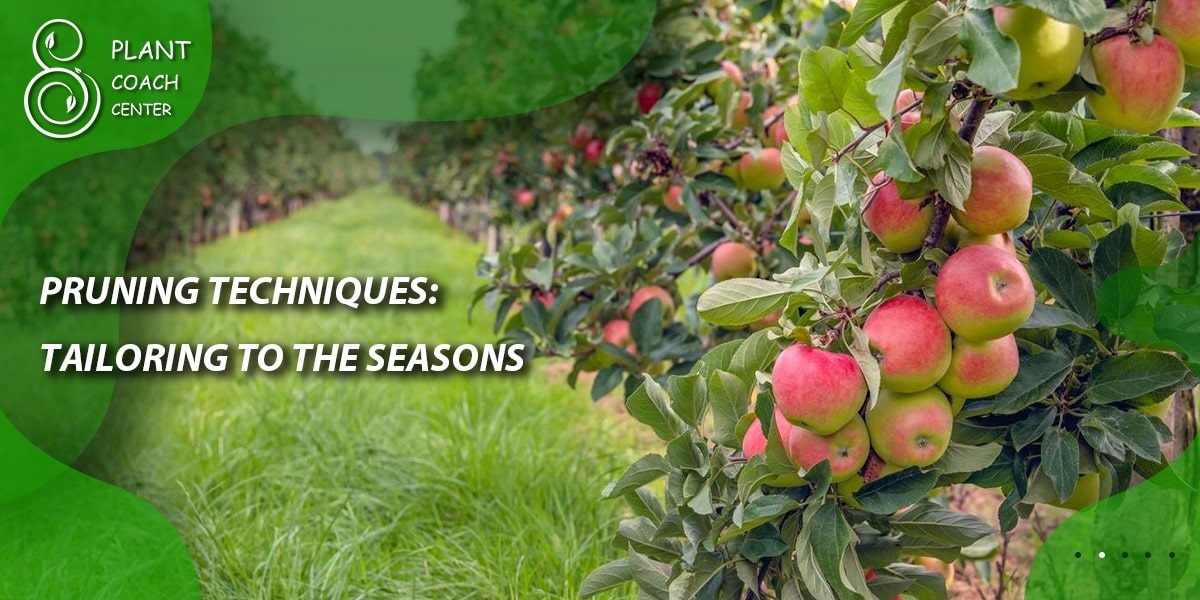
Why It Matters:
Knowing whether your tree is dormant or active is crucial because it dictates when you should prune. For shaping and structure adjustments, winter pruning during dormancy is ideal. For controlling growth and removing unwanted branches, summer pruning during active growth is the go-to choice.
How to Identify Growth Stages:
Identifying these growth stages isn’t rocket science. During winter, look for a tree without leaves, often after it has dropped them in late fall or early winter. Dormant buds appear small, and the tree’s growth is halted.
In contrast, during spring and summer, the tree is a vibrant green with full foliage. New growth and buds are more conspicuous, and the tree is actively producing energy and bearing fruit.
In summary, assessing your espalier apple tree’s growth stage is the compass guiding your pruning journey. It ensures that you prune at the right time for your specific goals, leading to healthier trees and more abundant harvests. So, take a moment to understand your tree’s rhythm, and you’ll be on your way to becoming a masterful espalier apple tree pruner.
Pruning Techniques: Tailoring to the Seasons
Pruning espalier apple trees isn’t a one-size-fits-all affair. It’s a nuanced dance with nature, and the steps you take must be precisely timed to align with the tree’s growth stage. Here, we’ll break down the specific pruning techniques for both winter and summer, providing step-by-step instructions to ensure you wield those pruning shears with the finesse of a horticultural maestro.
Winter Pruning: Shaping for the Future
Selecting Your Tools:
Start with sharp, clean pruning shears or loppers.
Opt for a pruning saw for thicker branches.
Ensure all tools are disinfected to prevent disease spread.
Assess the Tree’s Structure:
Begin by standing back and evaluating the overall shape.
Identify branches that need adjustment to maintain the desired form.
Prune with Precision:
Trim back branches that have grown too long, aiming for a clean cut just above a bud.
Remove any dead or diseased wood, cutting several inches into healthy tissue.
Thin out overcrowded areas to improve airflow and sunlight penetration.
Maintain a balanced and open structure, promoting even growth across branches.
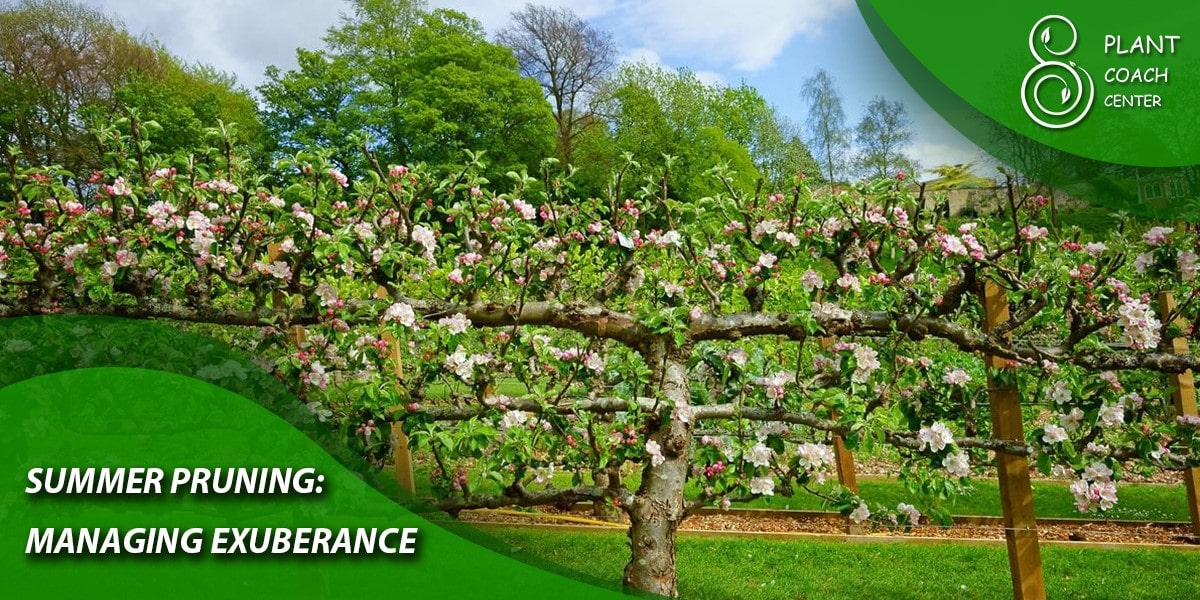
Observe Branch Angles:
Pay attention to the angles at which branches emerge from the main stem.
Favor branches with wider angles, as they are stronger and less likely to split under the weight of fruit.
Summer Pruning: Managing Exuberance
Timing Is Key:
Plan your summer pruning for the right months (June to August).
Aim to perform this during active growth to control excessive vigor.
Selective Pruning:
Identify branches that are straying from the desired shape or interfering with others.
Trim back these branches, again cutting just above a bud or junction with another branch.
Removing Water Sprouts:
Keep an eye out for water sprouts, fast-growing vertical shoots.
These can sap energy from the tree and should be promptly removed.
Maintain Airflow:
Trim areas where branches are overcrowded or crossing, allowing for better air circulation.
Improved airflow helps prevent diseases and ensures sunlight reaches all parts of the tree.
Precision Is Paramount:
Regardless of the season, always make clean cuts close to buds or branch junctions.
Avoid leaving stubs, which can become entry points for diseases.
In both winter and summer pruning, precision is your watchword. Each cut should be made with care, keeping in mind the tree’s form, balance, and the overall health of your espalier apple tree. By following these detailed steps and understanding the unique requirements of each season, you’ll become a skilled pruner capable of coaxing the best from your tree.
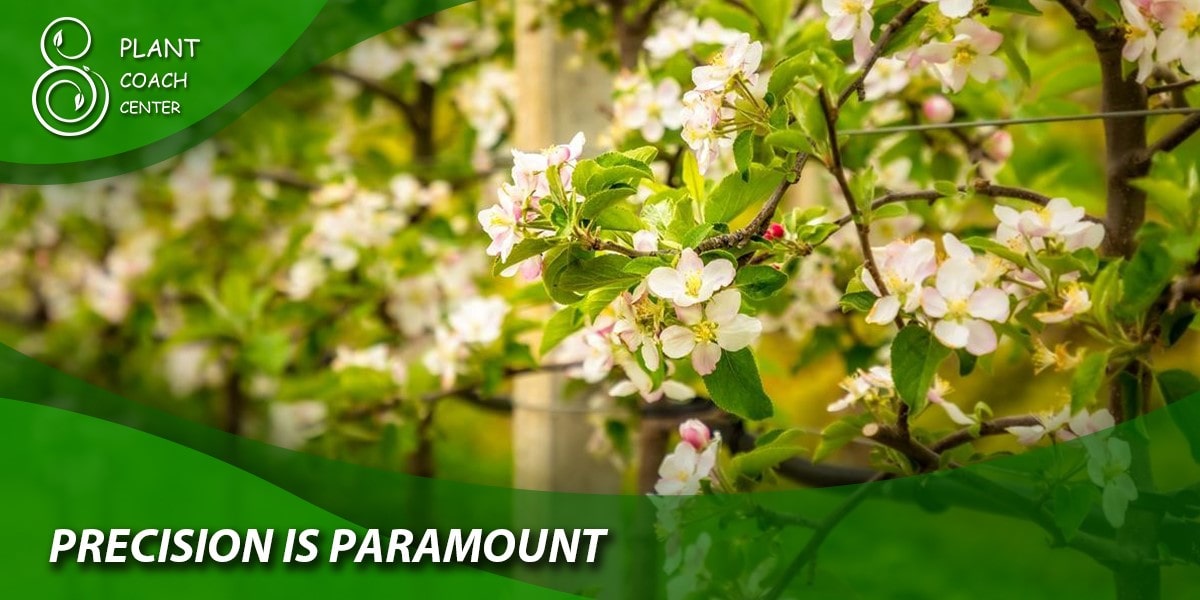
Conclusion
In conclusion, the timing of pruning is an elemental factor in the care and cultivation of espalier apple trees. It is the very heartbeat of success in this horticultural artistry. Whether it’s the winter’s precise shaping or the summer’s vigilant management, understanding the tree’s growth stage is paramount. Properly timed pruning ensures that the tree’s form remains impeccable, its size manageable, and its overall health robust. More significantly, it directly impacts fruit production, ensuring a bountiful harvest.
As guardians of these living works of art, we hold the power to shape their future. So, let’s embrace the seasons, wielding our pruning shears with precision and care. By doing so, we not only honor the age-old tradition of espalier apple tree cultivation but also set the stage for a flourishing orchard, where health and abundance harmonize. Take this knowledge, dear readers, and apply it proactively to your own espalier apple trees.
The rewards will be both delicious and visually stunning, a testament to your dedication and nature’s artistry intertwined.
FAQs
When is the best time to prune espalier apple trees in winter?
Late December to early February.
What months are ideal for summer pruning?
June to August.
Why is assessing the tree's growth stage important before pruning?
It determines the right time and method for pruning.
How can summer pruning benefit espalier apple trees?
It controls excessive growth and maintains shape.
What tool should you use for pruning thicker branches?
A pruning saw.
Why is precision important when pruning espalier apple trees?
Precision ensures healthy growth and abundant fruit production.


